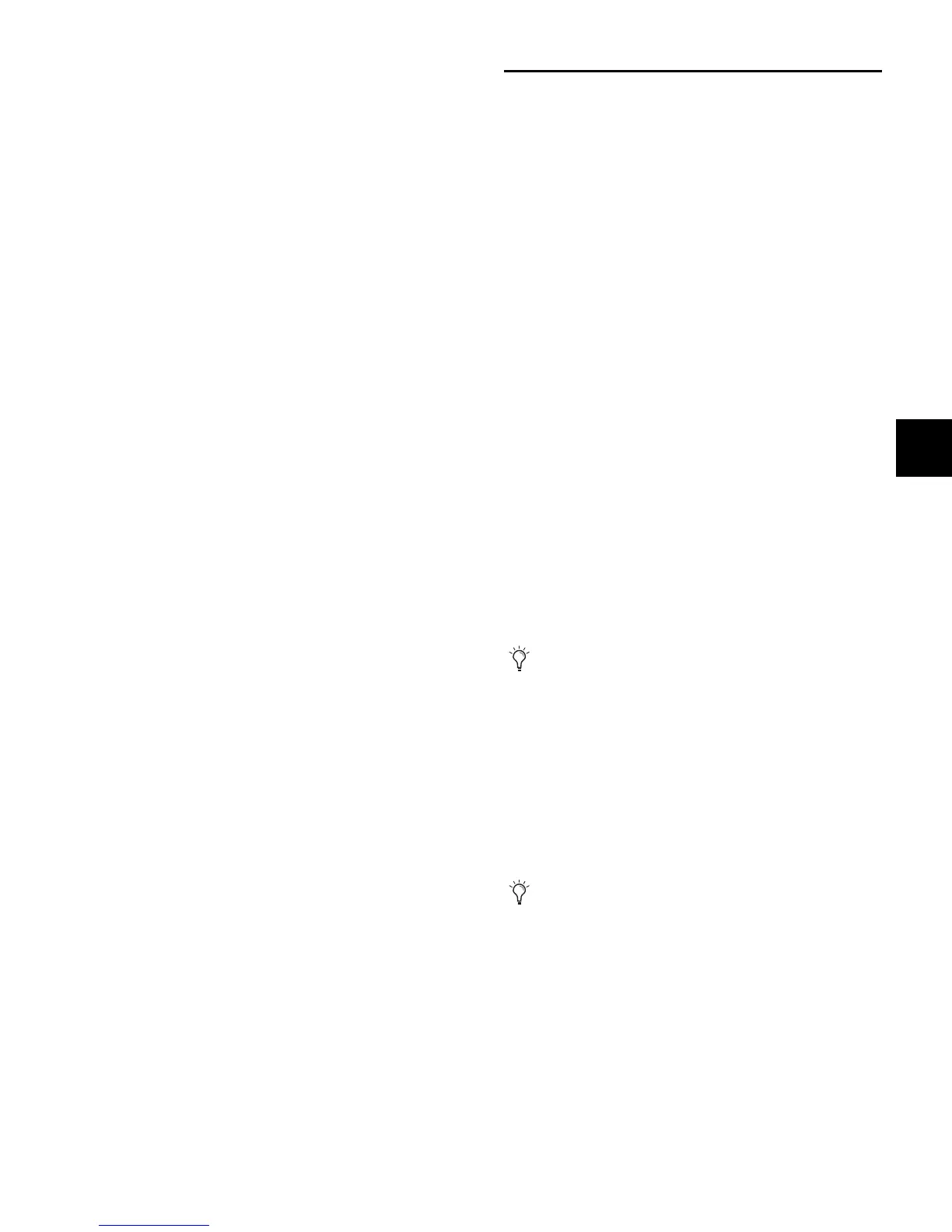Chapter 21: Snapshots 185
Duplicating Snapshots
Snapshots can be duplicated from the Snapshots list. You can
undo Duplicate commands.
To duplicate snapshots:
1 Select the snapshots you want to duplicate.
2 Do one of the following:
• Click Dup (Duplicate).
– or –
• Right-click the snapshot name and choose Duplicate.
A copy of each selected snapshot is placed after the selection,
with a plus sign (+) appended to the original snapshot name.
If multiple snapshots are selected in the list, the new (dupli-
cate) items are added below their original source snapshots.
Deleting Snapshots
Snapshots can be deleted from the Snapshots list. You can
undo Delete commands.
To delete snapshots:
1 Select the snapshots you want to delete.
2 Do one of the following:
• Click Del (Delete).
– or –
• Right-click the snapshot name and choose Delete.
The snapshots are removed from the Snapshots list, and suc-
ceeding snapshots are renumbered.
Moving Snapshots
Existing snapshots can be rearranged in the Snapshots list.
When you move one or more snapshots, they are automati-
cally renumbered in the list, but MTC values are left un-
changed. You can undo a snapshot move.
To move a snapshot, do one of the following:
Drag the currently selected snapshots to a new location in
the Snapshots list.
– or –
Double-click the snapshot number in the Snapshots list or
the banner display, type a new number, and press Enter on the
keyboard.
Making Changes to Snapshots
There may be situations where you need to change specific pa-
rameters in existing snapshots while leaving other parameters
unchanged.
For example, if a guitarist changes instruments in the middle
of a tour it might be necessary to change levels and EQ on the
guitar channel in all the snapshots in a show. Snapshots pro-
vides the following modes to accommodate these types of sit-
uations:
Edit Mode Lets you capture individual control changes while
you mix, and apply those changes to one or more pre-existing
snapshots as absolute or relative changes. For example, you
could enter Edit mode the first time a guitarist uses a new gui-
tar in rehearsal. When you are satisfied with your settings you
can apply them (in absolute or relative fashion) to update
other snapshots. See “Using Edit Mode” on page 185.
Propagate Mode Lets you update data in pre-existing snap-
shots after you've already made changes and decided you
want to keep them. While Edit mode requires you to know
ahead of time that you will be updating snapshots, Propagate
mode lets you decide to update other snapshots with current
settings after making adjustments to your mix. For example, if
its the third consecutive night you’ve reached to increase gain
on the DI channel for a new guitar, you could use Propagate
mode to quickly take the gain increase you just made and ap-
ply it to other snapshots. See “Using Propagate Mode” on
page 186.
Using Edit Mode
Edit mode is a powerful way to update specific parameters
across multiple snapshots without overwriting any settings
you want to preserve. By entering Edit mode before making
adjustments, you can edit a single control or any number of
controls, and your changes are tracked from the point Edit
mode was entered.
Absolute and Relative Edits
Changes can be applied to one or more selected snapshots as
absolute or relative values. Any parameter can be edited in ab-
solute fashion; all dB parameters can be edited in relative fash-
ion.
Events-driven recall of snapshots is disabled while in Prop-
agate or Edit mode. For more information, see Chapter 22,
“Events.”
The ability to edit a single control in Edit mode provides
more selectivity than Propagate mode.

